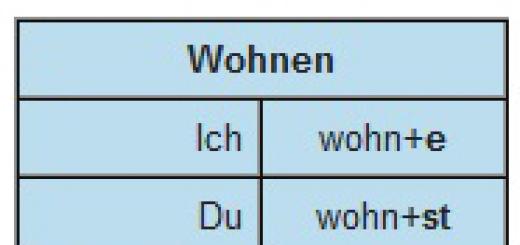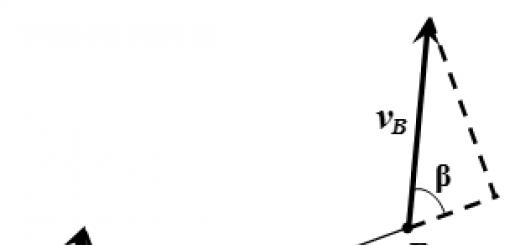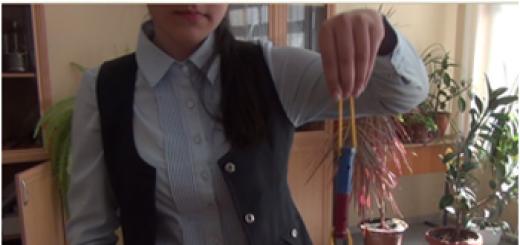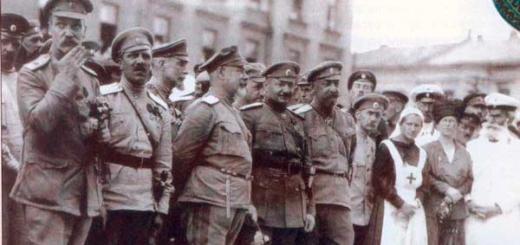In this section we will practice dividing words into syllables. (Not to be confused with hyphenation, which is covered in another section. These are slightly different things, as there are specific rules for hyphenation.)
Dividing words into syllables
The ability to divide words into syllables is a very important skill that it is advisable to acquire before entering first grade. Children who have learned to read syllables, accordingly, have fewer problems. But they still happen.Imagine, the child is already reading fluently, we taught him what letters there are - vowels and consonants, taught him to count the letters in a word, and then began to approach the transfer of words, and again returned to syllables. In this situation, children often get confused and instead of dividing into syllables, they divide the word by letters.
How to teach a child to divide words into syllables? There are many ways to do this.
Rules for dividing words into syllables
- syllables are always formed using vowels, That's why, There are as many vowels in a word as there are syllables. A syllable can consist of one vowel, but there are no syllables without vowels. Examples: mo-lo-ko, e-zhik, etc.
- If a syllable consists of several letters, then it always begins with a consonant.(An exception is cases when the previous syllable ends in Y: district)
Previously, the rules for dividing into syllables and for hyphenation were the same, with the exception that you could not hyphenate or leave one letter on a line. The new rules for dividing into syllables, which children now learn by, are much more complex, and, most importantly, different from dividing words for hyphenation. This is especially true for words with several consonants in the middle of the word. We shared: cat, window, class, etc.
According to the new rules, only sonorant consonants (m, n, l, r, m, l, n, r) and Y “stick” to the first syllable, in other cases all consonants “go” to the second syllable. For example: krom-ka, ban-ka, ban-ka, may-ka, but: sha-pka, equal, etc.
When divided into syllables, two identical consonants necessarily go to the second syllable: yes,
o-leak. In this case, the division of the same words for transfer will be different - given, from-flow, hat-ka, etc.
In any case, you need to constantly practice dividing words into syllables, especially if you have problems with this. Syllables can be sung and chanted, just like in a stadium. “Clapping” words with your hands helps. Speech therapists and teachers often advise placing the back of your hand under your chin and saying the word loudly, with your chin touching your hand with each syllable.
We offer you an online training game “Dividing words into syllables”. In it you need to drag the separator bars onto the word. Similar tasks are often found in Russian language tests in 1st grade. In this game we will divide words into syllables. In the next section we will practice dividing words for hyphenation.
Liliya Bondarenko
Developmental didactic game« Dividing words into syllables»
Didactic Games have a huge impact on the development of children's speech. Commenting on your actions helps improve your speaking skills and enrich your dictionary, the formation of the grammatical structure of speech, etc.
To work on teaching literacy, there is a need for a constant search for effective methods and aids that promote the development of sound and syllabic analysis of a word. To increase children's interest in skill development syllabic analysis of a word, created a manual " Dividing words into syllables".
Relevance: among the various speech disorders in preschool children, one of the most common and represents significant difficulty for correctional work is the disorder syllabic structure of words. Game - simulator« Divide words into syllables» designed to develop and practice skills divide words into syllables.
Target: preventing and overcoming violations syllabic structure of words in preschoolers.
Tasks: skill development divide words into syllables; development of stability of attention, methods of analysis, self-control, fine motor skills and a positive attitude towards learning activities.
A game– the simulator can be used in frontal, individual correction classes.
Efficient and practical importance: the tasks are playful and entertaining in nature, designed taking into account the age characteristics of children of senior preschool age. Simultaneously with the execution of game tasks, the very action of division words into syllables preschoolers learn ways to monitor the correctness of their actions.
Material: cards - subject pictures with diagrams syllable structure.
Game actions: to diagrams syllable structure(one two Three syllable) children choose suitable object pictures, check the quantity out loud syllables and connect the picture with the desired circuit. The one who completes the task first will win.

Publications on the topic:
"Syllables" Formation of children's speech skills through the use of didactic games in accordance with the Federal State Educational Standard before“Formation of children’s speech skills through the use of didactic games in accordance with the Federal State Educational Standard for Education” SENIOR GROUP April 1 week.
Title: “Game of Moods” Age: children 4-7 years old Purpose: development of communication skills and the emotional-volitional sphere of children Age: children.
Explanatory note. Purpose of the game: to strengthen counting skills within ten. Objectives: strengthen the ability to compare numbers within ten.
Lesson summary on teaching literacy “Dividing words into syllables. Emphasis" Literacy lesson notes. Topic: Dividing words into syllables. Emphasis. Purpose of the lesson: to teach students to divide words into syllables; form.
Didactic game “Collect words and guess the riddle” Didactic game “Collect words and guess the riddle” Goal: development of skills in putting words together from letters, reading skills, development of thinking skills.
Abstract of the OOD “Sounds [w] - [zh]. Letters Ш - Ж. Syllables ШИ - ЖИ» Objectives: correctional and educational: Clarify and compare the articulation and sound of the sounds [w] and [z]. Develop letter-sound skills.
- Talk in sentences, clearly state your desires, conduct a simple dialogue.
- Know the letters, it is advisable to recognize vowels and consonants.
- Be able to count mentally up to at least 5.
- Know the spatial concepts of “right” and “left”.
If a child has speech impairments, you should definitely consult a speech therapist. The specialist will indicate which activities to pay special attention to in order to avoid future problems associated with violations of the syllabic structure of words.
The division of words into syllables begins before learning to read by syllables. First, children are introduced to the concept of “word”. Each item has its own name. Children practice naming different words. Then the graphic designation of the word is entered in the form of a line or a rectangle. When children master syllables, they are separated by lines in accordance with the number. A word is distinguished by vowels and consonants, as well as a stressed syllable.
Syllables can be open or closed. Open ones look like a consonant + vowel, closed ones look like a vowel + consonant. This can be explained to children like this:
“In the open air it comes out freely: MAAAA, LOOO, NUUU. It's like we're exhaling. When closed, the air encounters an obstacle - lips, tongue or teeth. Therefore, it ends abruptly, as if closing - AM, OH, IL.
When explaining the principle of division into syllables, the technique of placing the palm under the chin is used. The number of times the chin drops, the number of syllables in a word.
Confident readers can determine the number of syllables by the number of vowels.
Why divide words into syllables?
Dividing words into syllables makes learning to read easier. Even adults, when they come across an unfamiliar word, mentally read it syllable by syllable. Dividing words into syllables for preschoolers is a way to better understand the phonetic structure of speech. This skill will help you do phonetic analysis of words in Russian lessons in the future.
Division into syllables is also needed in Russian lessons in the topic “Word Transfer”. Children who have poorly mastered syllables encounter errors when they leave a string of consonants on a line.
A syllable can consist of a vowel or a vowel and one or more consonants.
To teach a child division into syllables, you need to use visual methods: cards with syllables, didactic games and simulators.
Preschoolers really enjoy activities with cartoon and fairy-tale characters. If the tasks are given not by the parent, but by Peppa Pig, the classes will be more lively.
Division into syllables for preschoolers
Cards with syllables
It is convenient to use a large bank of syllables. The necessary letters are inserted into the pockets, resulting in syllables. Cards can be purchased as a set, or you can make them yourself. Cards made together will be of particular interest to your child. Dividing a word into syllables is easier for preschoolers to learn if the lessons are organized competently and interestingly.
Exercises with cards
1. An adult shows the syllable BA, invites the child to read and answer the question whether it is a word. It's not a word because it doesn't mean anything. Then the syllable RAN is taken. They also read it and find out that this construction is not a word. Next, the adult places the syllables BA and RAN next to each other. The kid reads the syllables, and the word “ram” comes out. It is useful to supplement the task with a corresponding picture.
2. The child is given an odd number of syllables on cards - so that at least four of them can be combined into words. You should start with five cards. Example - NE, BO, KOSH, KA, RU. First, the preschooler reads the syllables. Then the adult takes the syllable with which any of the words begins and offers to choose the “lost friend” syllable.
3. An adult prepares a few words in advance. He names the beginning of the word, the child must find the continuation on the cards. You need to start with two or three syllables so that the baby doesn’t get confused. The opposite option - the adult shows the syllable on the card, and the preschooler comes up with the ending.
4. An adult spells out two words using syllables, with the syllables mixed up: KOSH-BA, RY-KA. The child is asked to return the “lost” syllables to his words.
Didactic games
1. An adult writes on a piece of paper syllables, short words and combinations of consonants (PRS, PA, CAT, KI, KIT, KOSH, etc.). The child is asked to find the syllables and color them in with a green pencil. To diversify the game, you can offer to find words.
2. Playing with a ball. The adult calls the syllable - RU - and throws the ball. The child catches it and comes up with a continuation.
3. Write words on strips of paper. The preschooler reads them, then, together with an adult, divides them into syllables. Afterwards the word is cut into syllables with scissors. A variant of the task is to put words back together from the chopped syllables.
4. Clapping of syllables. This is a well-known and effective method for teaching syllable division. For each syllable you need to clap your palms or stamp your feet. For active children, you can divide words into syllables using jumps. A favorite toy or ball can also jump.
5. An adult names a word with one syllable: cat, catfish, ball, leaf. The child must name the word in a diminutive form: cat, ball, leaf. In this case, you need to determine the number of syllables in a word using your palm under the chin or clapping.
Games on the syllable structure of words for children arouse increased interest and help reinforce the material.
Exercise equipment
There are programs adapted for preschoolers and primary schoolchildren to train the skill of dividing into syllables. They can be purchased in stores, some can be downloaded. The simplest ones can be used online.
Exercises in simulators are usually similar to flashcard exercises. You can move syllables with the mouse, make words from them, choose between a syllable and a word, etc.
It is better not to use simulators at the initial stage of training. It is more appropriate to include them in classes when the child clearly understands the principle of division into syllables.
Children really enjoy interactive tasks on the computer. Many modern school textbooks are equipped with a disk with assignments. You can take simple exercises from there that are feasible for preschoolers.
The “Dividing words into syllables for children” simulator will help diversify activities with a preschooler and consolidate the acquired knowledge.
Rules for dividing into syllables
The education system has changed a lot in recent years. Other requirements also appeared for the school curriculum.
The rules for dividing words into syllables have changed somewhat since the days when modern parents born in the 80s and 90s were in elementary school.
1. A syllable begins with a consonant sound if it has several letters. Examples: CAR-TI-NA, TV-ROG, POST-STAV-KA. The exception is the letter Y. It is classified as the previous syllable: RAY-ON, REY-KA, MAY-KA.
2. Voiced sonorant consonants and Y refer to the first syllable in division: GAL-KA, SKAL-KA, TUM-BA.
3. Voiceless, voiced nonsonorant and hissing sounds belong to the second syllable: SHA-PKA, SHI-SHKA, MI-SHKA.
4. Double consonants move into the second syllable: TOR-GESTH-VE-NNY, LONG, A-KKU-RAT-NY. However, for the transfer, the old rule of division was preserved: SOLEMN, LONG, AQUATE.
Preschoolers learning to read do not need to explain these rules in detail.
An adult must know these rules himself and correct the child if he is wrong. Children will remember most words and will automatically divide them correctly. At school, during the appropriate lessons, the teacher will explain the rules for dividing into syllables.
Regular exercises at home, combined with activities in kindergarten, will make school learning easier in the future.
Training apparatus
TRe - nA - andeR This script allows you to divide words into syllables. Remember that the rules for dividing words into syllables and the rules for hyphenation are different rules.
How to break a word into syllables
1. In the Russian language there are sounds of different audibility: vowel sounds are more sonorous compared to consonant sounds. It is vowel sounds that form syllables and are syllabic. A syllable is one sound or several sounds pronounced with one exhalation push of air: vo-da, na-u-ka.
There are as many syllables in a word as there are vowel sounds.
Consonant sounds are non-syllabic. When pronouncing a word, the consonant sounds “stretch” towards the vowels, forming a syllable together with the vowels.
2. A syllable can consist of one sound (and then it must be a vowel) or several sounds (in this case, in addition to the vowel, the syllable contains a consonant or a group of consonants): rim - o-bo-dok; country - country; night light - night light; miniature - mi-ni-a-tyu-ra. If a syllable consists of two or more sounds, then it must begin with a consonant.
3. Syllables can be open or closed.
An open syllable ends with a vowel sound: vo-da, country.
A closed syllable ends with a consonant sound: sleep, lay-ner.
There are more open syllables in Russian. Closed syllables are usually observed at the end of a word: no-chnik (the first syllable is open, the second is closed), o-bo-dok (the first two syllables are open, the third is closed).
In the middle of a word, a syllable, as a rule, ends with a vowel sound, and a consonant or group of consonants coming after a vowel usually goes to the subsequent syllable: no-chnik, di-ktor.
In the middle of a word, closed syllables can only form unpaired voiced consonants [th], [r], [r'], [l], [l'], [m], [m'], [n], [n'] (sonorant): may-ka, Sony-ka, so-lom-ka.
4. Sometimes two consonants can be written in a word, but sound one, for example: get rid of [izh:yt’]. Therefore, in this case, two syllables stand out: and-live. The division into parts corresponds to the rules of word transfer, and not division into syllables.
The same can be seen in the example of the verb to leave, in which the combination of consonants zzh sounds like one sound [zh:]; therefore the division into syllables will be - leave, and dividing a word to hyphenate is leave.
Errors are especially common when highlighting syllables in verb forms ending in -tsya, -tsya.
The division vit-sya, zhets-sya is a division into parts for transfer, and not a division into syllables, since in such forms the combination of letters ts, ts sounds like one sound [ts].
When dividing into syllables, combinations of letters ts, ts go entirely to the next syllable: vi-tsya, zhmy-tsya.
5. When combining several consonants in the middle of a word: two identical consonants necessarily go to the next syllable: o-flow, yes-ny; two or more consonants usually go to the next syllable: sha-pka, equal. The exception is combinations of consonants in which the first is an unpaired voiced (sonorant): letters r, rj, l, l, m, m, n, n, y: mark-ka, dawn-ka, bul-ka, stel-ka, dam-ka, ban-ka, ban-ka, bark-ka.
Relevance: Among the various speech disorders in preschool children, one of the most common and represents a significant difficulty for correctional work is a violation of the syllabic structure of words. The simulator game “Divide words into syllables” is designed to develop and practice the ability to divide words into syllables.
Target: preventing and overcoming violations of the syllabic structure of words in preschoolers.
Tasks: development of the ability to divide words into syllables; development of stability of attention, methods of analysis, self-control, fine motor skills and a positive attitude towards learning activities.
Game - simulator can be used in frontal, individual correctional classes.
The game provides a training slide in 1 task. In case of an error in choosing an answer, the child will go to the educational slide and go back; when he clicks the mouse button on the cube, the “Back” button will appear.
The presence of a training slide gives the child the opportunity not only to take into account his mistake, but to correct it. In other tasks, the dog confirms the correct answer, and the mouse indicates that a mistake was made. At the same time, the child also has the opportunity to correct his mistake.
Efficiency and practical significance: The tasks are playful and entertaining in nature, designed taking into account the age characteristics of children of senior preschool age. Simultaneously with completing game tasks, the very act of dividing words into syllables, preschoolers learn ways to control the correctness of their actions.










